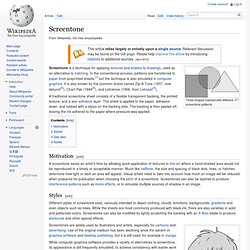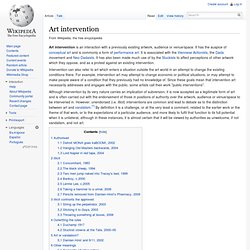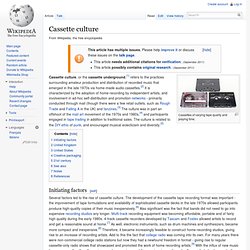

Rmiles. Romain andré. Loup. Vincent charlebois. Rosa Aiello. SAD NAVA. Coey kerr - hk. EMILY KAI BOCK. RICHARD KERR. RACHEL SHAW. 3 notes GRAY AREA (2012) acrylic on panel, 11x14” 14 notes AGADEZ (2011) acrylic on panel, 20 x 20” 22 notes HEAD ROOM (2011) acrylic on panel, 24 x 24” 4 notes DISPLAYS 2 (2010) acrylic on panel, 20 x 20” 17 notes DISPLAYS 3 (2010) acrylic on panel, 14 x 14”

Stasieczek, Patryk. Mitztakahashi.com. Maya Fuhr. Matt goerzen. Home : leah pires. Julian Garcia. Jon Rafman. Rodeo : Production et representation photo. D A B R O W S K I. HI GUYS. Jack Dylan. Untitled. Evan Prosofsky. MAKE MAKE, LIGHT LIGHT, RUN RUN. POOR GRAY. Christine Hale: ILLUSTRATION/DESIGN/TOMATO/RADIO. Arden Wray. Anna Evelyn Edell. Screentone. Three shapes overlaid with different screentone patterns A traditional screentone sheet consists of a flexible transparent backing, the printed texture, and a wax adhesive layer.

The sheet is applied to the paper, adhesive down, and rubbed with a stylus on the backing side. The backing is then peeled off, leaving the ink adhered to the paper where pressure was applied. Motivation[edit] A screentone saves an artist's time by allowing quick application of textures to line art where a hand-shaded area would not be reproduced in a timely or acceptable manner.
Styles[edit] Manga screentone Screentones are widely used by illustrators and artists, especially for cartoons and advertising. While computer graphics software provides a variety of alternatives to screentone, its appearance is still frequently simulated, to achieve consistency with earlier work or avoid the appearance of computer-generated images. Conceptual art. Conceptual art, sometimes simply called Conceptualism, is art in which the concept(s) or idea(s) involved in the work take precedence over traditional aesthetic and material concerns.

Many works of conceptual art, sometimes called installations, may be constructed by anyone simply by following a set of written instructions.[1] This method was fundamental to American artist Sol LeWitt's definition of Conceptual art, one of the first to appear in print: Appropriation (art) Appropriation in art is the use of pre-existing objects or images with little or no transformation applied to them.[1] The use of appropriation has played a significant role in the history of the arts (literary, visual, musical and performing arts).

In the visual arts, to appropriate means to properly adopt, borrow, recycle or sample aspects (or the entire form) of human-made visual culture. Notable in this respect are the Readymades of Marcel Duchamp. Scratch video. Scratch video was a British video art movement that emerged in the early to mid-1980s.

It was characterised by the use of found footage, fast cutting and multi-layered rhythms. It is significant in that, as a form of outsider art, it challenged many of the establishment assumptions of broadcast TV - as well of those of gallery-bound video art. Scratch video arose in opposition to broadcast TV, as (anti-)artists attempted to deal critically and directly with the impact of mass communications. The context these videos emerged in is important, as it tended to critique of the institutions making broadcast videos and the commercialism found on youth TV, especially MTV. This it did in form, content and in its mode of distribution.
Context[edit] Found art. Found objects derive their identity as art from the designation placed upon them by the artist and from the social history that comes with the object.

This may be indicated by either its anonymous wear and tear (as in collages of Kurt Schwitters) or by its recognizability as a consumer icon (as in the sculptures of Haim Steinbach). The context into which it is placed (e.g. a gallery or museum) is also a highly relevant factor. Art intervention. Art intervention is an interaction with a previously existing artwork, audience or venue/space.

It has the auspice of conceptual art and is commonly a form of performance art. It is associated with the Viennese Actionists, the Dada movement and Neo-Dadaists. It has also been made much use of by the Stuckists to affect perceptions of other artwork which they oppose, and as a protest against an existing intervention. Intervention can also refer to art which enters a situation outside the art world in an attempt to change the existing conditions there. Cultural appropriation. Wearing a sacred or imitation war bonnet as a "fashion accessory" is an example of cultural appropriation.[1][2] Cultural appropriation is the adoption of an oppressed people's cultural elements by members of the dominant culture, or by members of any culture that has historically oppressed the peoples of the originating culture.[3] Appropriation may eventually lead to the appropriating group being seen as the new face of said cultural practices.

As oppressed peoples' cultures are mimicked by the dominant culture, observers may begin to falsely associate certain cultural practices with the mimicker, and not with the people who originated them. This is often seen in the use by cultural outsiders of a minority, oppressed culture's symbols or other cultural elements, such as music, dance, spiritual ceremonies, modes of dress, speech and social behaviour, among other cultural expressions.[3][4][5] Overview[edit] Postmodern art. Cassette culture. Cassettes of varying tape quality and playing time.

Cassette culture, or the cassette underground,[1] refers to the practices surrounding amateur production and distribution of recorded music that emerged in the late 1970s via home-made audio cassettes.[2] It is characterized by the adoption of home-recording by independent artists, and involvement in ad-hoc self-distribution and promotion networks - primarily conducted through mail (though there were a few retail outlets, such as Rough Trade and Falling A in the UK) and fanzines.[3] The culture was in part an offshoot of the mail art movement of the 1970s and 1980s,[4] and participants engaged in tape trading in addition to traditional sales.
The culture is related to the DIY ethic of punk, and encouraged musical eclecticism and diversity.[5] Initiating factors[edit] Several factors led to the rise of cassette culture. United Kingdom[edit] United States[edit] Creative packaging[edit] 21st century[edit]